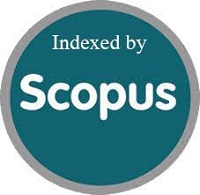Kerancuan Dalam Penggunaan Istilah “Construct Reliability”
DOI:
https://doi.org/10.15408/jp3i.v3i4.9323Keywords:
Reliabilitas, Realibilitas Konstruk, Skor-Total, True-ScoreAbstract
Abstract
In the classic theory where “true-score” for every person that had been tested cannot be obtained, the reliability coefficient is needed so that test result user can see how far the data can be trusted. For example, like making “confident interval” for true score in test score that already obtained. Next, researcher that will be analyzed the result data statistically, with regression analysis for example, can even use reliability coefficient test score to check bias in regression coefficient because of the low score of varible coefficient that used as predictor. So, when the data that analyzed is total-score, researcher have to report the reliability coefficient. Most popular reliability coefficient is Cronbach, that can estimate if some of the assumption is required, one of them is that all test item is parallel and assumption that error measurement cannot be corelated. With the advancement of psychometry subject over years, reliability coefficient can be estimate more accurate even when one or many of the assumption cannot be required. One of them is the reliability that measure each item’s representation, that many called it “construct reliability”. The word “construct” is happened to misleaded it. This article explain that commonly there are no difference between coefficient and the “new” coefiecient.
Abstrak
Dalam teori tes klasik di mana “true-score” untuk setiap orang yang di tes tidak dapat diperoleh, koefisien reliabilitas diperlukan agar pengguna hasil tes dapat melihat sejauh mana data yang dimiliki dapat dijadikan pegangan / dipercaya. Misalnya dengan membuat “confident interval” untuk true-score bagi skor tes (yang dalam hal ini adalah skor total dari skor item) yang diperoleh. Selanjutnya, peneliti yang akan menganalisis data hasil tes secara statistik, misalnya dengan analisis regresi, bahkan dapat menggunakan koefisien reliabilitas skor tes tersebut untuk mengkoreksi bias yang terjadi pada koefisien regresi akibat rendahnya reliabilitas skor variabel yang dijadikan prediktor. Oleh sebab itu, ketika data yang dianalisis adalah skor tes (skor-total) seorang peneliti atau pengguna tes harus melaporkan koefisien reliabilitas itu. Koefisien reliabilitas yang sangat populer adalah Cronbach , yang dapat di estimate jika beberapa asumsi terpenuhi, diantaranya asumsi bahwa seluruh item tes adalah paralel dan asumsi bahwa kesalahan pengukuran tidak saling berkorelasi. Seiring dengan kemajuan di bidang psikometri, misalnya dengan dikembangkannya metode Analisis Faktor Konfirmatorik (CFA), koefisien reliabilitas dapat diestimasi dengan lebih akurat meskipun satu atau beberapa dari asumsi tersebut tak dapat terpenuhi. Salah satunya adalah koefisien reliabilitas jika asumsi paralelitas tak terpenuhi, yaitu koefisien dengan memperhitungkan bobot setiap item, yang kemudian ada yang menyebutnya dengan istilah “construct reliability”. Penggunaan kata “construct” di sini ternyata telah menimbulkan kesalahan dalam menafsirkan istilah tersebut. Tulisan ini berisi uraian untuk menjelaskan bahwa pada dasarnya tak ada perbedaan yang mendasar antara koefisien seperti Cronbach dan sejenisnya dengan koefisien “baru” tersebut.
References
Cronbach, L.J. 1951. Coeficient Alpha and the Internal Structure of Tests. Psychometrika, 16, 3, 297 – 334.
Fornell, C. and Larcker, D.F. 1981. Evaluating Structural Equation Models with Unobservable Variables and Measurement Error. Journal of Marketing Research, 18, 39 – 50.
Hancock, G. R. and Mueller, R.O. 2001. Rethinking Construct Reliability Within Latent Variable Systems. In R. Cudeck, S. Du Toit, and D. Sorbom (Eds.): Structural Equation Modeling: Present and Future. Lincolnwood, Il: ScientificSoftware International, Inc.
Lord, F.M. 1980. Applications of Item Response Theory to Practical Testing Problems. Hillsdale, New Jersey: Lawrence Erlbaum Associates.
Lord, F.M.; Novick, M.R. 1968. Statistical Theories of Mental Test Scores. Reading, Mass.: Addison-Wesley.
Raykov, T. 1997. Estimation of Composite Reliability for Congeneric Measures. Applied Psychological Measurement, 21, 173 – 184.
Raykov, T. 2001. Studying Change in Scale Reliability for Repeated Multiple Measurements Via Covariance Structure Modeling. In R. Cudeck, S. Du Toit, and D. Sorbom (Eds.): Structural Equation Modeling: Present and Future. Lincolnwood, Il: Scientific Software International, Inc.
Umar, J. 2011. Bahan Pelatihan Analisa Faktor. Tidak diterbitkan. Jakarta: Institut Asesmen Indonesia.



